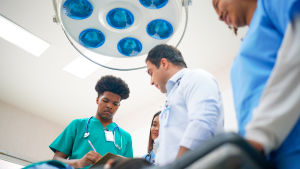In this article, we will learn about HAZOP and the importance of this methodology for your company’s risk management
Every organization, whether small or large, is subject to face procedures, activities, tasks, and operations that can generate risks to its business. Thus, a number of methodologies (or tools) have been created with the goal of helping to prevent potential problems from occurring and helping to optimize the processes.
HAZOP is one of these methodologies. It was created in the 1960s in the UK to promote quality production and safer procedures for organizations.
In this article, we have gathered the key information for you to learn about this tool and find out how it can help your company. So, keep reading to understand this subject better!
What is HAZOP (Hazard and Operability Study)?
The acronym HAZOP stands for Hazard and Operability Study. This tool is a methodology that has the function of identifying risks associated with the production process.
His method is based on a procedure that generates questions in a systematic way through the appropriate use of a set of questions.
It is common to see this method being applied in the construction industry, where electrical or mechanical processes are more involved. This is with the aim of avoiding accidents and ensuring more safety for workers.
However, HAZOP can be used in any organization, because its focus is to identify potential problems in the early periods of a project development or process execution, and help identify what risks may arise in the system and its execution.
The method performs a detailed investigation of each process step to find possible deviations, identify their cause, and propose measures to solve these problems. These solution and prevention measures are divided into two main points:
- Problems in operability: that is, something that might compromise production;
- Risks: all possible actions that are associated with the safety of employees, systems, or the environment.
How do we put HAZOP (Hazard and Operability Study) into practice?
For continuous processes, the Hazard and Operability Study (HAZOP), can start with the use of a process map in flowchart.
To apply the HAZOP method, a spreadsheet can be prepared in excel or in some specific software, depending on the demands of your organization.
There is no single or correct template, so just a spreadsheet may already be enough to present and record information that will be used throughout the process.
But it is recommended to follow a few steps, because HAZOP systematically analyzes every element in a process to find possible situations that pose a danger in the operation.
For it to be implemented, it is recommended that a team of up to 8 experienced members of the organization be formed. Preferably those who have knowledge about the process to be analyzed. They must evaluate, know, and identify which system procedures and their possible variables.
Continuing on, the steps to follow to apply the method would be:
- Identify what deviations the process may have;
- Determine what the causes are;
- Identify what the possible consequences are;
- Suggest ways on how to detect and prevent deviations;
- Assess the risk of accidents;
- Determine measures that aim to reduce the cause of the risks;
- And, finally, document all this by making a report.
This entire procedure focuses on the safety of the employees, to identify any process that will put them in danger. However, we also focus on identifying the cause in the operability of the equipment, the quality of the service or product, the environment, or the efficiency of the employees. Thus generating improvement for the organization as a whole.
Once the causes and consequences of the deviation are verified, this method seeks to propose measures to eliminate or minimize the hazard and solve the operability problem.
HAZOP can be used in the design phase of new systems, during modifications or extensions of systems already in operation. As well as, it can also be used as a method of reviewing the security processes of organizations.
HAZOP can be an important technique for your company!
HAZOP can be important for your company if you want to identify in advance possible situations that could cause your system to fail. With it, you may be able to provide corrective actions, before something unplanned happens.
Through the HAZOP method, you can have more control in your procedures, processes, and services by investing in risk prevention methods. Another point to note is that this method allows you to reduce costs in the company. This is because the sooner errors are identified, the sooner they can be prevented and solved.
In this way, HAZOP is a great tool to enhance safety and efficiency in your organization. Through this methodology, you can always be one step ahead of possible undesirable situations!










